calsfoundation@cals.org
St. Boniface Colony
aka: New Dixie (Perry County)
The St. Boniface Colony was the informal name for a successful German Catholic immigrant settlement established in 1880 in eastern Perry County. Over time, the colony became known as the community of New Dixie.
Beginning in 1880, immigrants from Germany, Switzerland, and other German-speaking countries began arriving in the area near the small village of Dixie, located near the Arkansas River in eastern Perry County. Dixie had been settled in the mid-to-late 1870s and was named after the daughter of Hezekiah Lewis Trundle, a man who owned a large plantation on the banks of the Arkansas River. The Little Rock and Fort Smith Railroad (LR&FS) held large swaths of land in Perry County, and although the railway often utilized its own land agent and brought large groups to settle in Arkansas, there is no evidence that the St. Boniface Colony resulted from such planning. Instead, the families gradually moved to the area, attracted by the cheap land, with little encouragement from the railroad or sponsorship of an organization.
This approach differs from other immigrant colonies such as the St. Joseph Colony, centered around nearby Morrilton (Conway County), or the Polish Colony, founded in 1877 near Marche (Pulaski County). Though a few came directly from Europe, most of the families who settled in St. Boniface Colony had lived temporarily in other U.S. states before relocating to Perry County, many of them coming from Clinton County, Illinois. In its June 10, 1881, issue, the Independent Arkansian newspaper noted that forty-eight families had settled in the new German colony.
Bishop Edward Fitzgerald of the Catholic Diocese of Little Rock tried to help the fledgling community by encouraging the railway to promote the area and bring in new immigrants. The bishop also sent his vicar general, Reverend Aegidius Hennemann, OSB, to visit the families and celebrate mass every six to eight weeks. Fitzgerald also convinced the railway to donate forty acres of land for a church. In 1881, the mission of St. Boniface, named in honor of the patron saint of Germany, was established; it was elevated to parish status in 1884.
There is conflicting information about the actual construction of the church. The Independent Arkansian article noted that, by June 1881, arrangements were already being made to erect a “very fine, large and commodious church,” and a 1906 article in the German-language newspaper Arkansas Echo on the history of the colony indicated that the church was mostly finished by spring 1882. However, the railway did not donate the land until 1883. This 1883 date seems to be confirmed by the entry in Sadliers’ Catholic Directory for 1882, which stated that a church was being erected at the mission.
Father Felix Rumpf, Hennemann’s successor spiritual leader for the colony, established a school in 1883, with local merchant and church organist Adolph Benetz serving as its first teacher. In 1890, Father Matthew Saettele, OSB, negotiated with nuns from St. Scholastica to staff the St. Boniface school, a relationship that would continue for over fifty years. Saettele built a house for the sisters to make their stay in the colony more comfortable. He also had a rectory built for himself.
The various German dialects made communication among the settlers difficult. The land, once cleared, was conducive to farming, and the settlers grew corn, cotton, and grapes. In some cases, the settlers manufactured wine.
Malaria was rampant early on. The earliest known burial in the cemetery located next to the church was of ten-year-old Katarina Nutt, who died in 1882, a little over a year after her family emigrated from Balzers, Liechtenstein, to Perry County. However, by 1884, the settlement—at this point called St. Boniface Colony—was being promoted in immigration literature as a success. The population of Dixie (which included the colony) was estimated to be 100, and the small community had a physician, blacksmith, and general store; by 1888, the population was estimated to be 150. Eventually, the community centered around the church, which was about two and a half miles from Dixie, and the area around the church became known as New Dixie.
In late 1881, the Irish Catholic Colonization Society purchased 35,000 acres in Perry and Yell counties from the LR&FS and established “St. Patrick’s Colony” just southeast of Dardanelle (Yell County) and extending into Perry County as far as Casa (Perry County). It was largely unsuccessful, but at least one family—the McNulty family—resettled in the St. Boniface Colony. By 1906, the St. Boniface settlement had twenty-two German-speaking and two English-speaking families.
On the morning of January 10, 1906, a fire started in the nuns’ house and quickly engulfed the structure and spread to the nearby church. Though no lives were lost, the buildings were destroyed, with very little being saved. The exception was the church’s intricately hand-carved high altar, which had been imported from Germany. The value of the loss was estimated to be about $2,000. The settlers quickly rebuilt, and a new church was dedicated in September 1906. The present church is listed on the Arkansas Register of Historic Places.
Although anti-German sentiment grew in Arkansas during World War I and World War II, the settlers experienced relatively few problems. The roads around the settlement remained unpaved, and traveling to and from Conway (Faulkner County)—just fifteen miles away—involved crossing the Arkansas River via ferry. In 1947, a new two-room school was built to replace the older one-room building. The new school building also served as a gathering hall for the community. Three years later, the high school grades consolidated with the nearby Bigelow (Perry County) public schools. The school never had a high attendance and closed in 1969. The school building was destroyed when it was struck by lightning in 1976.
The original church bells, which had fallen from the bell tower during the 1906 fire, were discovered during a renovation project. The bells were put on display for the centennial anniversary of the church in 2006.
In 2014, the community of New Dixie had a population of approximately 150, with many of the descendants of the original immigrants still living on the land purchased from the railway. There are no commercial businesses located in the community.
For additional information:
Browning, Jane. “Parish Profiles.” Arkansas Catholic, June 17, 1990, p. 10.
Dickerson, Rachel Parker. “Historic St. Boniface ‘a Special Place.’” 501 Life (March 2010): 36, 38–39.
“Einiges über die Colonie Dixie, Arkansas.” Arkansas Echo, September 28, 1906, p. 4.
Perry County, Arkansas: Its Land & People. Perryville, AR: Perry County Historical and Genealogical Society, 2004.
Petrucelli, Fred. “The Bells of St. Boniface.” Log Cabin Democrat, April 20, 1997, pp. 1B, 10B.
“St. Boniface and New Dixie History and Happenings.” Petit Jean Country Headlight, June 18, 1986, p. 1.
“St. Boniface Catholic Church.” Arkansas Register of Historic Places, Arkansas Historic Preservation Program. Online at https://www.arkansasheritage.com/arkansas-register/st-boniface-catholic-church (accessed February 8, 2023).
Timothy G. Nutt
University of Arkansas, Fayetteville
 Post-Reconstruction through the Gilded Age, 1875 through 1900
Post-Reconstruction through the Gilded Age, 1875 through 1900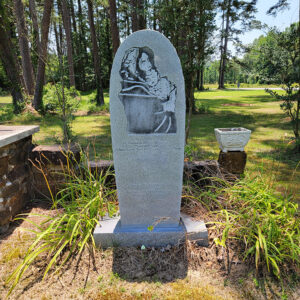 Abortion Memorial
Abortion Memorial 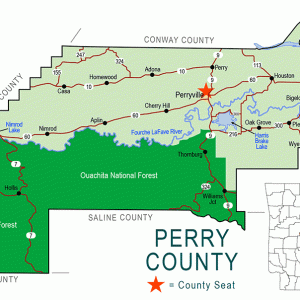 Perry County Map
Perry County Map 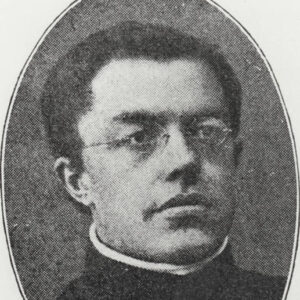 Father Matthew Saettele
Father Matthew Saettele 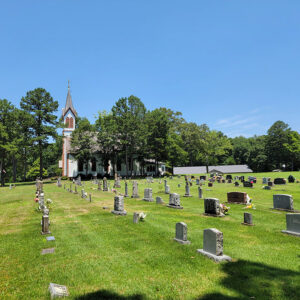 St. Boniface Cemetery
St. Boniface Cemetery  St. Boniface Church
St. Boniface Church  St. Boniface Church
St. Boniface Church 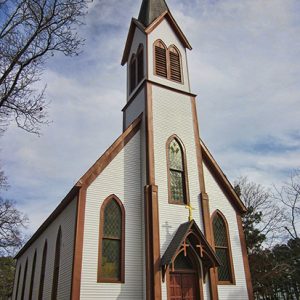 St. Boniface Church
St. Boniface Church 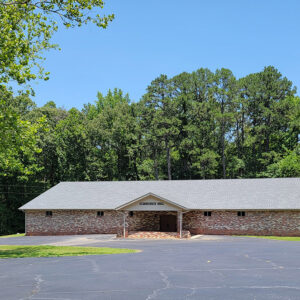 St. Boniface Hall
St. Boniface Hall 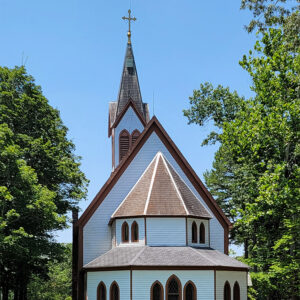 St. Boniface Rear View
St. Boniface Rear View  St. Boniface Rectory
St. Boniface Rectory  St. Boniface Side View
St. Boniface Side View 




Comments
No comments on this entry yet.